To share with you the coffee culture around the world, the people who spread the coffee culture.
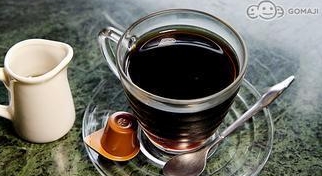
Coffee is no longer a new word. Coffee tastes different in different countries and places, but how much more do you know about coffee culture in different regions? When we travel, if you can know in advance about the local coffee culture, then it must be just a break during the trip, and you can really taste the local culture and customs. You know, there are a lot of wonderful stories hidden behind the good food.
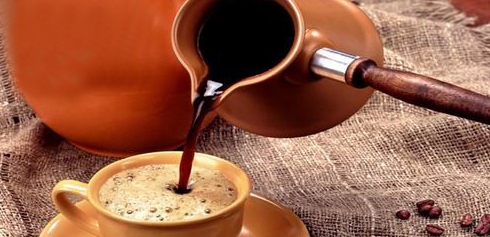
The United States: no taboos about American style
When Americans drink coffee, it is like playing a game without rules, laissez-faire without taboos. Americans are dismissive of all kinds of exquisite coffee made by Europeans. Americans drink coffee freely, and at the same time, coffee goes deep into their lives and is difficult to separate, and the influence is so deep that it is not considered a life without coffee. It is said that the Apollo 13 spaceship, which carried a man to the moon for the first time, had a life-and-death failure on its way home. At that time, the ground crew comforted the three astronauts with a word: come on! Delicious hot coffee is waiting for your return. Americans can't do without coffee almost 24 hours a day, whether at home, in the office, in public, or at a roadside vending machine. This consumes 1/3 of the world's coffee production and is the country with the largest coffee consumption in the world.
Generally speaking, life in the United States is relatively busy and tense, unlike people in Europe and the Middle East who are able to enjoy life in a leisurely mood. When drinking coffee, it is often a large pot of electrothermal filtered coffee (Drip Coffee Marker). From morning to night, because there is too much water and less coffee (10 grams of coffee in a cup of water to 200 cc of water), the taste is particularly weak, so many people criticize that American coffee is really bad. In fact, in all parts of the United States, coffee lovers can still taste their favorite coffee taste with a little more effort. If pure American coffee is divided into two categories, the east coast of the United States is stronger than the west coast, and the south is stronger than the north. Ethnically speaking, immigrants from southern Europe and Latinos prefer strong coffee to those from Britain, Germany and northern Europe.
In addition, although the United States is the largest exporter of instant coffee, not many people in the United States drink instant coffee. In recent years, they pay more and more attention to the results of a healthy diet, the market for non-caffeine (Coffeeineless Coffee) is increasing, and coffee without sugar is becoming more and more common.
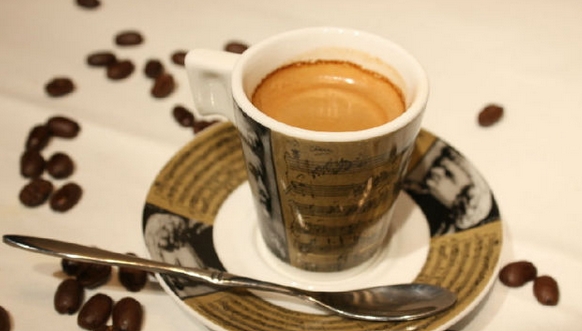
Turkey: breathtaking Turkey
Coffee in the ancient Middle East, like the legendary myth of the 1001 night, is a veiled girl with a thousand faces, which can not only help get close to God, but also wash the spring of sadness. When it comes to coffee, we have to mention the Middle East (Turkey) coffee, because whether from the perspective of Islam or Christianity, the origin of coffee is in the remote and mysterious mountains of the Middle East. After three hundred years of banning roles in Muslim religious circles in the 13th and 15th centuries, coffee was officially introduced into Turkey in the 16th century, began to be commercialized, and quickly spread to the European continent. This coffee drinking method, commonly known as Turkish coffee or Arabica coffee, which is popular in Greece, Eastern Europe, the Middle East and North Africa, still retains the mystery of early religious rituals. The practice of traditional Turkish coffee is to grind thick black coffee beans into fine powder, put sugar and cold water into a red copper coffee brewer like a deep spoon (IBRIK), cook slowly over low heat, after repeated stirring and adding water, about 20 minutes later, a small cup of 50cc fragrant and strong coffee is finished.
As the local people drink coffee is not filtered, this cup of coffee, which is as thick as broth, is poured into the cup, with sticky foam on the surface and dregs at the bottom of the cup. In the Middle East, being invited to someone's house for coffee represents the most sincere respect of the host, so in addition to praising the mellow coffee, guests should also remember not to drink water even if they are full of dregs, because it implies that the coffee is not good. Arabs drink coffee slowly, and they even have a set of exquisite coffee ways, just like the Chinese tea ceremony, when drinking coffee, they not only burn incense, but also sprinkle spices, smell incense, and have a dazzling array of coffee pot utensils. More full of Arabian Nights style. A cup of Middle Eastern coffee with cloves, cardamom and cinnamon is full of fragrance when it is hot. No wonder Arabs praise it: musk attracts the heart and soul.
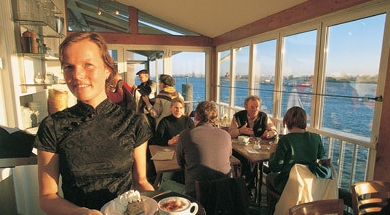
Italy: passionate Italy
There are two things to be careful when you go sightseeing in Italy: one is a man and the other is coffee. In Italy, coffee and men are actually two different things, so there is a famous Italian saying: men should be like good coffee, both strong and enthusiastic!
Italian coffee, named Espresso in English, has been widely known by coffee lovers in China in recent years. This kind of pure black coffee, which is thick and fragrant, with a layer of golden foam floating on its surface, is thick and hot like the devil escaped from hell. It is often called to drink and falls into unspeakable charm and is unforgettable. The characteristic of Italian coffee is that it is a fast word in its English name; it can be cooked no more than ten seconds and drank quickly, because there are only two or three mouthfuls. Most Italians make a cup of coffee as soon as they get up. Men and women drink almost from morning till night. A small coffee shop called BAR can be seen everywhere on the street, selling a cup of coffee of about 400 lira, or about NT $10, for people to drink up standing up.
On average, Italians drink 20 cups of coffee a day. Coffee beans mixed with Italian coffee are the most fried beans in the world. This is in line with the special function of the Italian coffee pot to instantly extract coffee. Since the weight of a cup of Italian coffee is only 50cc, and the amount of coffee beans is only six to eight grams, this kind of strong-looking coffee is actually not harmful to the intestines and stomach, and even helps digestion! There is also a way to drink Italian coffee with milk, called Cappuccino, which uses steam above 130 degrees Celsius in an Italian coffee pot to first foam the milk and then float on the thick black coffee. Sweet fresh milk, pure white lovely; charming Espresso devil under its embellishment, immediately transformed into a wonderful angel!
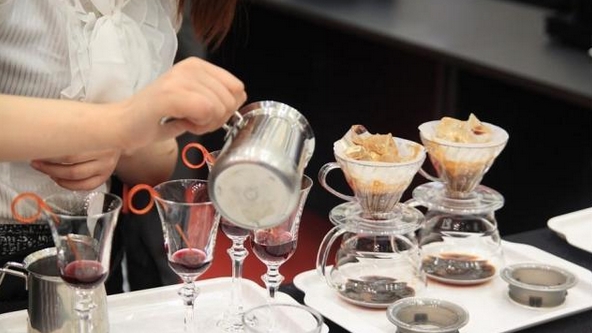
Central and Northern Europe: moderate and rational Middle European style
Not as enthusiastic as the Italians or as romantic as the French, people in central and northern Europe drink coffee rationally and gently, just like their organized nationality. European life and coffee have almost formed an inseparable link, except for the different coffee drinking methods in Italy and France, from Austria, Switzerland, Germany, and even several Nordic countries, it can be said that the habits and tastes of coffee are more or less the same. they are well aware of the golden mean and belong to the taste of medium concentration.
People in Central and Northern Europe make coffee at home, the most commonly used handy filter paper coffee pots, and the common household electric coffee makers (Drip Coffee Maker) in Taiwan. Among them, the filter paper brewing coffee method (Paper Drip) originated in central Europe, was invented by the German Mrs. MERITA at the beginning of this century, and spread widely in European countries. But the coffee in the business premises, due to the need for a large amount of fast supply, is still dominated by the Espresso coffee machine, but with different flavors of coffee beans. Perhaps the biggest difference between drinking coffee in cafes in these countries and in Taiwan is that they make a clear distinction between coffee, sugar, and milk. Many cafes have different prices for black coffee and coffee with milk on their price lists. some even include portions as a factor in price differences. Some countries in central Europe, such as Austria and Switzerland, are famous for making dim sum and a variety of cakes, of course, have become another excellent performance on the coffee table.
In recent years, the average coffee consumption of the people of the four Nordic countries has been among the top four in the world (more than 1,000 cups per person per year). Their love of coffee is best described by a libretto from an opera by Baja: such wonderful coffee is sweeter than a thousand kisses and more intoxicating than aging! 6401.jpg Japanese Coffee: exquisite Age
The first coffee spread to Japan was Nagasaki in the Yuanlu period. And people officially accepted it from the Meiji era. Now let's take a look at the coffee history of Japan.
At first, the Japanese were not used to the successive opening of coffee houses in Western Europe, when the literature and art of coffee culture were in bloom, while Japan was in the midst of the strict policy of locking up countries in the Edo era. Coffee, the first drink at that time, was set up at the Dutch store off the island of Nagasaki (1641) and presumed to have been brought in at that time. However, those who can get in touch with foreigners are servants (officials), businessmen, interpreters and tourist girls. Two or three interpreters of Zunberu's Journey to Japan recorded in 1776 finally knew the delicacy of coffee. The "coffee" that specially spread to the island to symbolize foreign culture could not be popularized at that time. "
The Japanese drink coffee by the author of the crazy singer and opera in 1804. In the book Qiongpu and Qiongpu, the people of Shushan in Daejeon were invited to drink coffee on a red-haired boat. the beans were fried black and powdered and mixed with white sugar. the bitter smell can not adapt to the bitter taste. Judging from the background in which coffee is imported from the island and is not widely accepted, the policy of locking up the country has indeed affected the Japanese people's unaccustomed to the taste of the new drink.
Sisamert, who went to the Dutch residence on the island in Japan in 1823, seems to like coffee. In the book Edo's visit to the House, it is recorded that the Japanese like to drink coffee when they get along with us.
The real popularity began in the middle of Meiji. Members of the founding literary magazine Hiroshi Kitahara, Woodpecker Ishikawa, Kwangtaro Takamura, Haruo Sato, and Hefeng Nagai meet each month at the "Hung Nest" venue in Hashimachi, Japan. In that shop, you can drink authentic French cuisine and foreign wine, and coffee is also authentic French deep-roasted coffee. The nest of Hong is like a social field for literati.
From the Meiji era to the Taisho era, cultural salons like this did help create several coffee houses, and Japan finally entered the culture of coffee. However, it is still a rare shop for ordinary people.
The coffee salon formed at that time was a social place for literati or literary youth, but at the same time affordable coffee houses were popular unwittingly. In the heyday of the Taisho era, there were more than 20 branches across the country. Why is the coffee salon so popular? Because the coffee in the high-end western restaurant cost 15 yuan at that time, while imitating the coffee shop in Paris or New York, a cup of low-priced coffee with 5 yuan was thoroughly implemented. So you can have authentic and fragrant Brazilian coffee at a price of 1/3. In the national well-known coffee salon, it is hard to count the Japanese who have tasted delicious coffee. Coffee salon has left an indelible contribution to popular coffee.
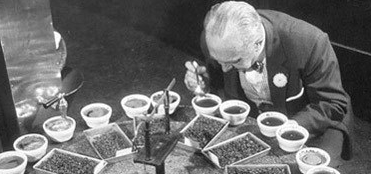
Coffee also blooms its own beauty on the tip of the tongue, as well as the thick culture. If you can, please forward it with your hands. I hope all of us will become walkers to spread the beautiful culture.
Important Notice :
前街咖啡 FrontStreet Coffee has moved to new addredd:
FrontStreet Coffee Address: 315,Donghua East Road,GuangZhou
Tel:020 38364473
- Prev

Foreign microfilm Coffee named after Coffee
Basic Information title: microfilm "coffees" microfilm "Coffee" Director: Alex Beh starring: Julie McNiven Napoleon Dynamite Type: funny plot area: foreign film length: 10:38 minute 21.2 Film introduction Love can make people do irrational things, even if it comes from kindness. On second thought, when you try to bring coffee to your ex-girlfriend
- Next

Coffee customs are different all over the world. What's so particular about drinking coffee?
The custom of coffee in northern Europe and continental Europe is that the coffee brewed has no sediment, light and round; the beans are roasted brown; the way of brewing is drip or machine, all kinds of coffee cappuccino, Viennese coffee, French milk coffee changed by Espresso. The custom of coffee in the Middle East is embodied in the persistence of the basic way of drinking coffee.
Related
- How did the Salvadoran coffee industry develop in Central America?
- What exactly does the golden cup extraction of coffee mean?
- The Origin of Coffee flower
- [2023 Starbucks World Earth Day] there are more meaningful things besides free Starbucks coffee!
- What kind of coffee is there in Spain? 9 Flavors of Spanish Coffee
- Aromatic African coffee| Kenya's coffee culture and historical production area
- Liberica Coffee Bean knowledge: the characteristics of Liberian Coffee beans of the three original species of Coffee beans
- The origin and formula of Spanish latte introduces the taste characteristics of Bombon coffee in Valencia, Spain.
- How to adjust the solution of over-extracted coffee
- What is the tasting period of coffee beans? What is the period of coffee and beans? How should coffee wake up and raise beans?

